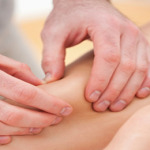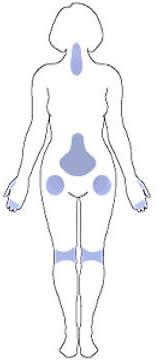Can Osteoarthritis Cause Disability?
The damaged cartilage (especially articular cartilage) is the starting point for osteoarthritis (OA) to occur. But eventually, this joint disease can involve the breakdown of ligaments, joint lining, and underlying bone. All of these things can lead to joint pain and stiffness which then can affect the joint’s range of motion. Can the disease cause disability? Will it cripple you?
 Joints of knees, fingers, spine, and hips are the most common joints affected in OA. The specific reason or cause behind the problem is not fully understood yet, but it is thought as a consequence of both molecular and mechanical events in the affected joint.
Joints of knees, fingers, spine, and hips are the most common joints affected in OA. The specific reason or cause behind the problem is not fully understood yet, but it is thought as a consequence of both molecular and mechanical events in the affected joint.
The onset of the disease usually comes gradually. Typically it starts at the age of 40 years or older. Yap, the risk of OA is equivalent with the age. The older you are – the greater risk you have to develop this joint disease. See also the symptoms on this section!
Although some treatment options are available for coping, but unfortunately there is still no cure for OA. Generally, the treatment is focused to help ease and relieve the symptoms and improve the function of the affected joint.
The treatment plan can include education, weight control (overweight can make the problem worse), medications, physical therapies, and some surgical-treatment options for severe case.
Most cases of the disease affect women, particularly after age 45. But the disease is slightly more common in men before age 45. Overall, this joint disease is relatively more common in women, why?
No one knows the answer clearly, though there are some theories. Some experts theorize that the size and structure of hips in women may be the answer.
See the following picture for the commonly joints affected by this kind of arthritis (image credit to NIH senior health).
Knees
 Knee joints are so essential to support your daily activities such as for walking, running, and climbing. The cartilage in the knee joints is tough, but it also often gets pressure /stress in your daily routines. Therefore knees are the most commonly affected by OA.
Knee joints are so essential to support your daily activities such as for walking, running, and climbing. The cartilage in the knee joints is tough, but it also often gets pressure /stress in your daily routines. Therefore knees are the most commonly affected by OA.
Hands
Women tend to have OA of the hands than men. In women, it often occurs after menopause. It usually affects the joints of fingers and in the base of thumb.
OS that affects hand may run in families. If you are a woman and have a family history of OA in the hands, your risk of developing the same condition could be double.
Spine
OA that affects spine may appear as pain and stiffness in the lower back and neck. Sometime the problem may also cause numbness, weakness, or tingling in the arms or legs. Even in severe case, it may affect bowel and bladder function.
Hips
Joints between bone ends in the hips also can be affected by OA. It usually causes stiffness and pain in the hips. But sometime the symptoms can be felt in the groin, buttocks, and even in the knees.
Yap, there is a chance for osteoarthritis to cause disability – particularly for OA of knee (among non-institutionalized adults, it is 1 of 5 leading causes of disability).
Even according to CDC (the Centers for Disease Control and Prevention), OA is the top 3 leading cause of ‘Years Lived with Disability (YLDs)’.
In general, all people with OA are at greater chance of disability. About 80 percent of them develop some degree of movement limitation, in which 14 percent need help for daily routine, 11 percent need help for personal care, and 25 percent are poor in performing major ADLs (activities of daily livings).
As mentioned before, OA can affect different joints and this can affect the level of movement limitation. Again, OA of knee is the most commonly associated with disability.
Therefore, there are several impairment listings released by Social Security. These are used to evaluate whether or not you can get benefit for SSI of osteoarthritis.
If you don’t meet to the requirement in one of these impairment listings, you still could claim and be approved for disability by showing that your disease cause a significant movement limitation or significantly interfere with your daily activities.
For instance, you still could be approved for disability if you are able to show that your OA limits your movement in performing the major daily tasks such as walking, sitting, or standing for periods of time.



